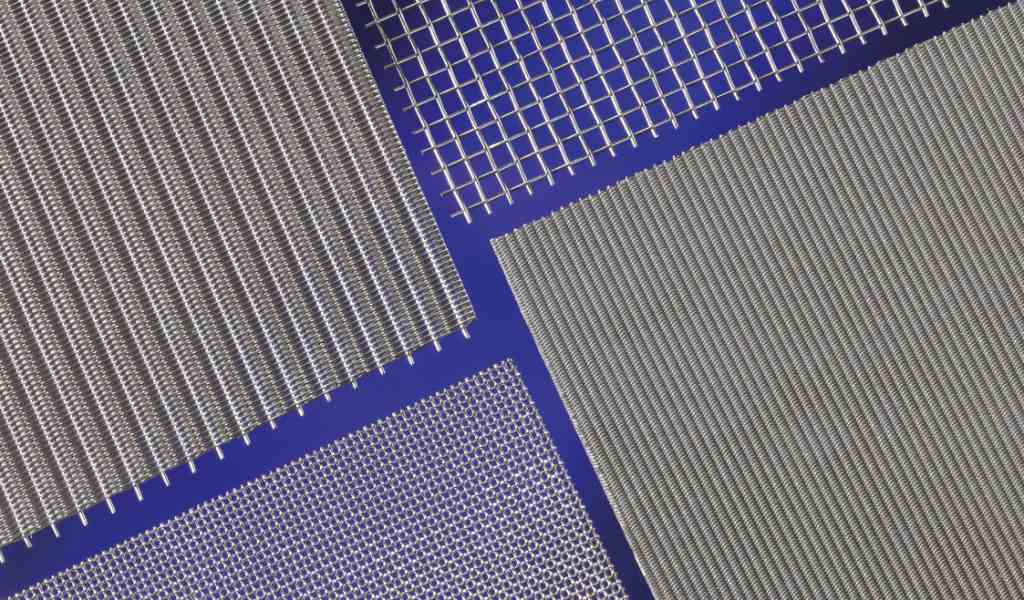Understanding the Standards That Matter to EMI Shielding Success
Designing EMI shielding isn’t just about mitigating interference, it’s about doing so in a way that meets strict and evolving regulatory requirements. From standards such as FCC Part 15 to MIL-STD-461, navigating the landscape of EMI compliance can be overwhelming.
This is especially true when standards vary by industry, geography, and device type. Missing the mark can result in costly redesigns, delayed certifications, or even product failure.
Understanding these standards upfront can drastically improve the efficiency and performance of your shielding solution. And when paired with the right materials, such as precision-engineered woven wire mesh, meeting those standards becomes not just achievable, but a repeatable process.
At W.S. Tyler, our mission is to make the world cleaner and safer through quality engineered wire mesh solutions. With over 150 years of experience supporting EMI-sensitive industries, we help engineers build systems that meet compliance benchmarks without compromising performance.
In this article, we’ll break down the most critical EMI standards affecting modern electronic designs, explore how these standards influence material and enclosure choices, and explain why woven wire mesh offers a compliant, high-performance path forward.
The Standards That Matter: Navigating EMI Shielding Design
EMI shielding requirements are rarely one-size-fits-all. Regulatory standards play a major role in how electronic systems are designed, especially when those systems operate in environments where reliability and safety are non-negotiable.
The challenge isn’t just understanding what each standard says, it’s designing around them in a way that’s both effective and efficient.
Key regulations like FCC Part 15, CISPR, MIL-STD-461, and RTCA DO-160 set the bar for electromagnetic compatibility, each with their own scope and testing methodologies. These standards dictate everything from acceptable emission levels to shielding effectiveness and grounding protocols.
Depending on the application, failure to comply can lead to failed inspections, withheld certifications, or total product disqualifications.
That’s why understanding the “why” behind each standard is just as important as the “what”. Design engineers need to know not only what thresholds must be met, but how material selection, enclosure geometry, and integration strategies impact compliance outcomes. The earlier these requirements are factored into the design process, the fewer costly surprises arise downstream.
Whether you’re building for commercial electronics, aerospace platforms, or industrial automation, aligning your EMI shielding strategy with the right standards from day one is essential for getting to market quickly, and making sure you stay there.
How Key EMI Regulations Impact Shielding Design and Material Selection
Behind every EMI shielding decision lies a specific set of regulatory targets, and meeting those targets often depends on how well your material and design choices align with the demands of the environment. Agencies like the FCC (in the U.S.), CE (in Europe), and various military and aerospace bodies enforce compliance through a range of well-defined standards.
While most EMI standards share the goal of minimizing electromagnetic interference, the paths they take to get there can vary widely.
FCC Part 15, for example, governs unlicensed emissions in commercial products sold in the U.S. It’s a foundational requirement for anything from consumer electronics to IoT devices, placing strict limits on both radiated and conducted emissions.
MIL-STD-461, on the other hand, sets far more aggressive thresholds for military platforms, often in harsh and variable environments, requiring shielding solutions that go beyond basic conductivity.
These differences have a direct impact on what materials perform best in each use case. A commercial product might prioritize cost-efficiency and ease of integration, making lightweight conductive coatings a logical fit.
Interested in learning more about conductive coatings in EMI shielding? Discover more in the article we created below:
In contrast, military or aerospace applications often call for woven wire mesh where durability, frequency range, and grounding integrity are paramount.
What’s consistent across all industries, however, is the need for shielding materials that are verifiable, repeatable, and testable. When regulations demand documented performance, choosing a shielding solution that supports standardized testing and validation becomes non-negotiable.
The more precise the material performance, the more confidently you can approach compliance.
Why Wire Mesh Helps Meet Today’s Most Critical EMI Standards
As EMI shielding requirements continue to evolve, materials that offer both performance and adaptability are becoming essential. Woven wire mesh has emerged as one of the few solutions that consistently meets the demands of modern EMI standards, from FCC and CE to MIL-STD and RTCA DO-160.
One of wire mesh’s greatest strengths is its broadband shielding effectiveness. The physical structure of interwoven metallic wires creates a conductive path that can reflect and absorb EMI across a wide range of frequencies, from low MHz to high GHz, without sacrificing airflow, weight, or form factor.
This makes it especially well-suited to applications in telecommunications, defense, medical electronics, and aerospace, where consistent performance across operating environments is critical.
Equally important is testability. Unlike coatings that may degrade over time or require destructive testing to verify compliance, woven wire mesh can be evaluated nondestructively, and its performance can be precisely modeled and predicted.
This reliability not only supports compliance during prototyping and manufacturing, but also improves long-term traceability during audits or product recalls.
Finally, the inherent customizability of mesh, including weave type, wire diameter, material alloy, and mesh count, means it can be tailored to match the exact specifications of the EMI standard being targeted, ensuring more accurate and consistent compliance.
In industries where certification is not optional, wire mesh delivers proven and repeatable results, which makes all the difference.
EMI Compliance Starts With the Right Materials
Achieving EMI compliance requires more than just ticking boxes, it demands thoughtful design, intentional material selection, and an understanding of the regulatory frameworks that shape electronic innovation. As standards grow stricter and performance expectations rise, it’s critical to choose shielding materials that can keep pace without introducing unnecessary trade-offs.
Woven wire mesh offers engineers a trusted path to compliance and it is one that balances effectiveness, durability, and customizability. By aligning your design strategy with both current and emerging standards, you’ll build solutions that perform today and remain compliant tomorrow.
At W.S. Tyler, our mission is to make the world cleaner and safer through precision-engineered wire mesh solutions. With over 150 years of experience, we help engineers navigate the complexities of EMI shielding with confidence and clarity.
Want to discover more about the standards that are in place with wire mesh? Check out our article below:
About Dylan Polz
Dylan is a Content Writer with 2 years of experience in marketing and SEO. Passionate about learning and strengthening his writing skills, he is currently expanding his expertise in particle analysis and woven wire mesh technologies. With a strong belief in the power of information to drive positive change, his goal is to develop content that supports cleaner, safer solutions across all industries.



